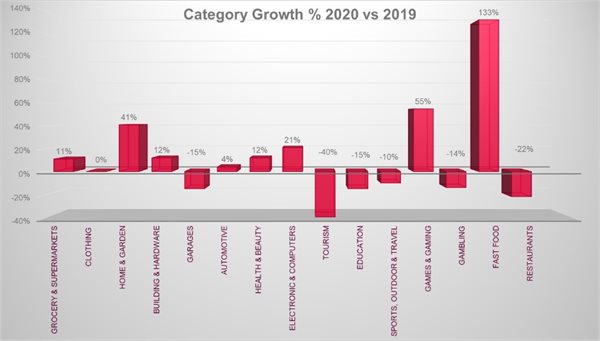Whilst listening to a recent presentation by Absa's equity analyst Samantha Naicker entitled 'Navigating the Maze on South African Food Producers', I stumbled on a theory dubbed 'the lipstick effect'. Defined by Wikipedia, it is when facing an economic crisis, consumers will be more willing to buy less costly luxury goods but will continue to spend money on small indulgences.
Thus, when the consumer’s trust in the economy is dwindling, they will buy goods that have less impact on their available funds but still make them feel good about themselves and life in general.
However, despite lockdown levels easing, the Covid-19 crisis did not lead to the traditional 'lipstick effect; witnessed in past eras. The theory of spending more on less costly luxury items that will make you feel better about yourself, seemingly failed – well, when it comes to lipstick at least.
Circumstances greater than the crisis resulted in a different behaviour from consumers than anticipated. They opted for spending money on home improvements and home entertainment, rather than luxury feel-better goods such as make-up and perfume. The home environment became the primary focus of spending and 'necessary' for survival.
Based on Absa card spending data the trend continues, whilst return to 'normal' pre-Covid world of work, travel, and social interaction, remains elusively out of reach.
This got me thinking further about the drivers of consumer behaviour and how the pandemic also accelerated online and omnichannel retail beyond expectations. If we look at our data, it is clear that while e-commerce was starting to gather some traction, the lockdown was the catalyst for a step-change in adoption. While foot traffic in malls is starting to pick up, there’s a clear increase in the number of people whose behaviours have shifted to online. It now has become a habit consumers have adopted.
Considering all of the aforementioned, it is noticeable that consumers are effectively the ultimate drivers of trends and change. Given the fact that the South African economy (and many economies globally) faces a number of big, structural challenges, for which we require such change, it is becoming clear that we will need to start thinking differently about how we influence behavioural changes to drive consumer adoption of necessary trends, technologies and industries for much-needed future growth.
Buy Local initiative
One of the long-standing criticisms of the South African government specifically is that it has failed to identify strategic sectors and industries to support and capacitate. We often tried to be all things to all people and failed to identify sectors that we can excel in or those that are important in the local economy in terms of job creation or export revenue potential.
Over the last few years, there has been a focus on establishing sectoral master plans with a combination of tax and financial incentives to attract foreign investors with some notable successes like the automotive sector. We have recognised the need to move from an import economy back to self-producing and export-driven economy in order to create jobs and thrive.
As an example, the increased focus on the textile sector and related master plan has the potential to bring manufacturing back to South Africa, and furthermore also adds support to small-scale farmers and fabric producers, artists and creatives. However, we keep coming back to the question: “How do we incentivise South Africans to support their local talent and buy local produce?”
A number of the retailers run initiatives – often in conjunction with the likes of Discovery – where you get rebates on buying healthy food and gear. Could the same principle be applied to buying locally manufactured products and how would the consumer respond to this?
From Absa’s consumer merchant spending analytics, it is clear that the clothing industry took extra strain during Covid, putting even more pressure on the already struggling textile industry. The below graph illustrates spending growth across various categories:
Could initiatives be considered that actively drives a 'buying local' trend by putting money back into the consumers' pockets when it is so desperately needed? Perhaps, through reduced tax (VAT) or discounts passed via corporate tax, for buying locally made produce? This is the sort of thinking we need to adopt to create the positive change we so much require in this economy.
Karin Du Chenne 17 Sep 2020
Reducing physical cash as a payment mechanism
Cash comes with risk and risk comes with additional costs. Ideally we would like to significantly reduce cash in our payment systems, but in an economy like South Africa cash is still a major part of the day-to-day payment system. Covid-19 has raised further concerns around the risks associated with handling cash and even the passing of card terminals between consumers and merchants.
James Scott, head digital and platform services at Absa Corporate and Investment Banking agrees that cash is king and very relevant in Africa when he states: “It is no longer about a gap in the technology to displace cash, it is all about shifting consumer and merchant behaviour towards enabling digital payments. Regulatory shifts in South Africa will see the introduction of a low-cost payment rail, this has the potential to really open up innovation, financially include more of the population and reduce the friction and risk inherit in cash. An exciting space to watch.”
So, the question then is how do we influence a change in consumer behaviour to demand payment from sources by means other than cash? Again, we have to consider incentivising consumers with discounts for paying digitally or other. There is no doubt a saving to be done away with between security and cash deposit fees, which potentially could be passed on to the consumers.
In theory at least, the idea is great and has the potential of running stores more efficiently by reducing security risks and probably lower other cash-related costs such as insurance.
Ashleigh Blair, Bernadette Versfeld and Kelvin Madembo 18 May 2021
Netflix: The stick or the carrot
Before I end, I would be remiss not to discuss the stick versus carrot approach and what it brings out in consumers. For those who are old enough to remember, you used to have to pay a license to have a bicycle and own a dog as revenue categories for government. These were eventually canned and interestingly, both the leisure and pet care sectors have exploded as major retail categories.
Over the last decade, the SABC has bemoaned the lack of compliance around TV licences as consumers have shifted away from cable to online streaming options. The response from government and the regulators is to attempt to use the stick of applying TV licenses for the viewing of the likes of Netflix. In my humble opinion, sticks rarely work in driving a new trend being adopted or behaviour we would like to see – quite the opposite.
I don’t have all the answers but I think that the events of 2020 have shown that if we can find ways to positively influence and drive change in consumer behaviours, we potentially have the ability to re-imagine our local economy.





































